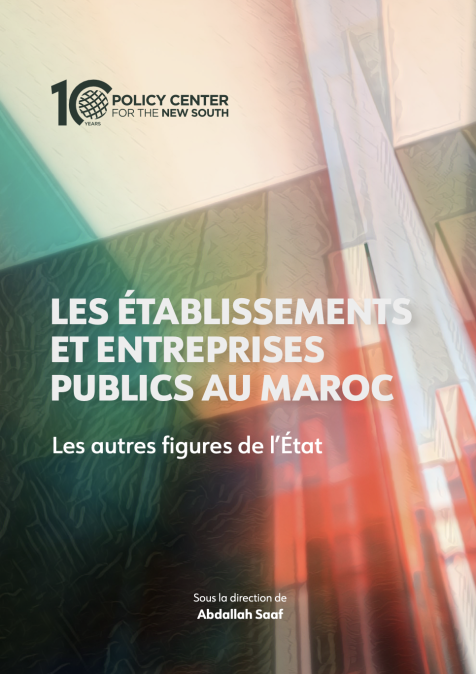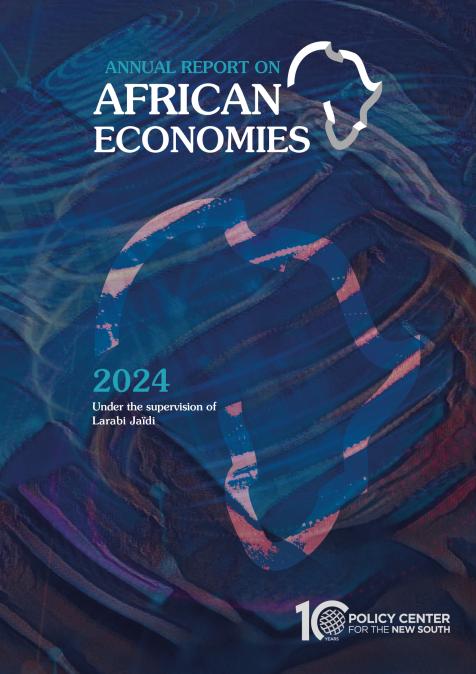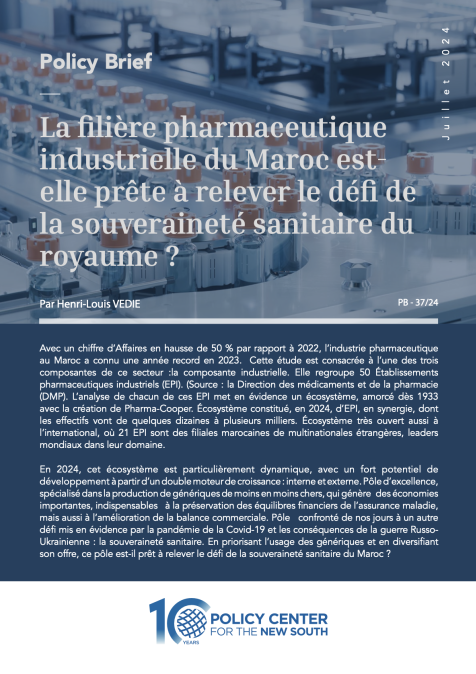RELATED CONTENT
-
Helmut Sorge and Hans Peter LankesAugust 23, 2024Delve into the critical topic of fostering Africa's economic transformation through innovative financing. Hans Peter Lankes shares his expertise on what innovative financing entails and t ...
-
Helmut Sorge & Tayo AdulojuAugust 16, 2024In this episode, Tayo Aduloju discusses the pressing issues of social justice and systemic inequality, emphasizing the role of education and policy reform in fostering a more equitable so ...
-
August 16, 2024Cette vidéo offre une réflexion structurée sur le rôle essentiel de la jeunesse dans la réalisation des Objectifs de Développement Durable, en mettant en lumière trois dimensions clés : l'éducation de qualité (ODD 4), le travail décent et la croissance économique (ODD 8), ainsi que la s...
-
August 13, 2024شهد القطاع المصرفي المغربي توسعًا ملحوظًا في الأسواق الأفريقية خلال السنوات الأخيرة. من خلال هذا التوسع، تسعى البنوك المغربية إلى ترسيخ وجودها في أسواق تشهد طلباً متزايداً على الخدمات المالية، واستغلال الفرص الاستثمارية التي توفرها القارة الأفريقية. ولكن ما هي الدوافع الحقيقية وراء هذا ...
-
 AuthorsAugust 8, 2024Most of the Population Does Not Benefit Until mid-2021, cruise ships moved with all their glitz and glamour into Venice’s Guidecca Canal, overshadowing the historic buildings, the foundations of which were destabilized with every wave, and threatening fisher boats and cappuccino lovers sitting beside the canal. Thousands of cruise passengers spilled onto the cobblestone roads, enjoying Gondola rides, glimpsing the Bridge of Sighs, exploring the fish markets near the Rialto bridge a ...
AuthorsAugust 8, 2024Most of the Population Does Not Benefit Until mid-2021, cruise ships moved with all their glitz and glamour into Venice’s Guidecca Canal, overshadowing the historic buildings, the foundations of which were destabilized with every wave, and threatening fisher boats and cappuccino lovers sitting beside the canal. Thousands of cruise passengers spilled onto the cobblestone roads, enjoying Gondola rides, glimpsing the Bridge of Sighs, exploring the fish markets near the Rialto bridge a ... -
AuthorsJuly 26, 2024Avec un chiffre d’Affaires en hausse de 50 % par rapport à 2022, l’industrie pharmaceutique au Maroc a connu une année record en 2023. Cette étude est consacrée à l’une des trois composantes de ce secteur :la composante industrielle. Elle regroupe 50 Établissements pharmaceutiques industriels (EPI). (Source : la Direction des médicaments et de la pharmacie (DMP). L’analyse de chacun de ces EPI met en évidence un écosystème, amorcé dès 1933 avec la création de Pharma-Coo ...
-
July 25, 2024In today's episode, we turn our focus to the economic landscape of sub-Saharan Africa, a region grappling with significant challenges and opportunities as it strives for recovery. According to the latest IMF economic outlook for sub-Saharan Africa, the region has faced diverse economic ...
-
July 25, 2024This event is organized by the Green Investment Principles (GIP) Africa Chapter, co-chaired by Bank of Africa and Ninety One, in partnership with the Policy Center for the New South (PCNS). The GIP Africa Chapter, established during COP27 in Egypt, is one of the regional chapters of the...
-
 AuthorsSous la direction deJuly 16, 2024Plusieurs raisons expliquent la création d’Établissements et d’entreprises publics (EEP). Aux facteurs économiques, industriels et de service public s’ajoutent des considérations idéologiques, politiques, et historiques. Quels peuvent être aujourd’hui le rôle et la place des EEP au Maroc, dans un système politique qui affirme tendre au pluralisme, dans un cadre économique marqué par le libre-échangisme fondé sur la propriété privée ? Après une période coloniale où ...
AuthorsSous la direction deJuly 16, 2024Plusieurs raisons expliquent la création d’Établissements et d’entreprises publics (EEP). Aux facteurs économiques, industriels et de service public s’ajoutent des considérations idéologiques, politiques, et historiques. Quels peuvent être aujourd’hui le rôle et la place des EEP au Maroc, dans un système politique qui affirme tendre au pluralisme, dans un cadre économique marqué par le libre-échangisme fondé sur la propriété privée ? Après une période coloniale où ... -
 AuthorsUnder the supervision ofJuly 12, 2024The 2024 Annual Report on the African Economy is dedicated to monetary and financial issues on the Continent. There are three reasons for this choice. African economies are exposed to macro-financial instabilities partly generated by global monetary and financial turbulence. The Continent’s currencies and financial systems are engaged in very different dynamics, where routine methods and daring, if not risky, practices coexist. The question of the architecture of the internationa ...
AuthorsUnder the supervision ofJuly 12, 2024The 2024 Annual Report on the African Economy is dedicated to monetary and financial issues on the Continent. There are three reasons for this choice. African economies are exposed to macro-financial instabilities partly generated by global monetary and financial turbulence. The Continent’s currencies and financial systems are engaged in very different dynamics, where routine methods and daring, if not risky, practices coexist. The question of the architecture of the internationa ...




